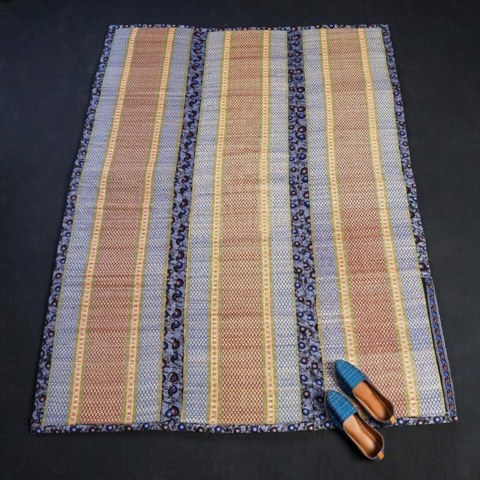UPSC Articles
Madur mats
Part of: GS Prelims and GS – I- Culture; GS-III – GI tag
In news Two women from Sabang in West Bengal’s Paschim Medinpur district have been given the National Handicraft Award in recognition of their outstanding contribution to the development of crafts.
Gauri Rani Jana and Gauri Bala Das were honoured for their skills in making madur floor mats that are unique to West Bengal.
About Madur mats
- These are An intrinsic part of the Bengali lifestyle
- They are made of natural fibres.
- Around 74% of the weavers make hand woven mats and the remaining develop loom based products.
- Few of the traditional mat making families still retain the knowledge of weaving a fine variety of exclusive mats locally known as Masland or Mataranchi.
- WBKVIB (West Bengal Khadi & Village Industries Board) has taken up an initiative to develop skill, capacity and institutions of Madurkathi artisans, facilitate market linkage in order to augment their earnings and provide infrastructural support in Purba and Paschim Medinipur.
- Women Of the Households Are Involved In Weaving This beautiful craft.
About Masland
- Masland is a fine quality madur mat, which takes weeks to weave.
- During the 18th century, Masland mats flourished under royal patronage.
- In 1744, Nawab Alibardi Khan issued a charter to land-owning jagirdar in this regard, and as a result, it was obligatory to supply Masland mats for use in the Collectorate.
Do you know?
Madurkathi
- Madurkathi was awarded the geographical indication (GI) tag by the Geographical Indication Registry in April 2018.
- Madurkathi is a rhizome-based plant ( Cyperus tegetum or Cyperus pangorei ) found abundantly in the alluvial tracts of Purba and Paschim Medinipur.

News source: TH














